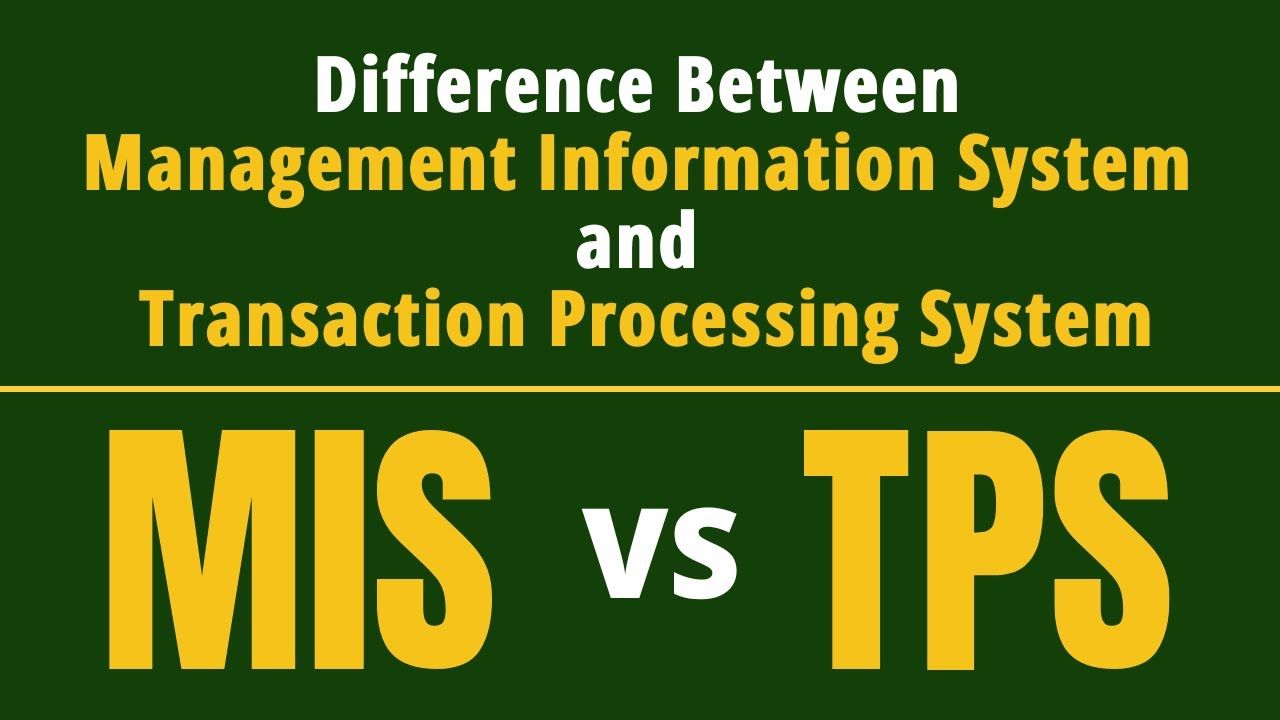Introduction to Information Systems
Summary
TLDRThis video script delves into the nuances between data, information, and knowledge, illustrating how data is transformed into valuable information through organization and processing. It underscores the importance of quality information for decision-making and outlines the characteristics of such information. The script also defines information systems, their components, and types, emphasizing their role in automating processes and enhancing productivity. Furthermore, it discusses the organizational strategies necessary for successful implementation and use of these systems.
Takeaways
- 📊 Data is raw and uncontextualized facts, such as numbers or words, which do not inherently convey meaning.
- 📚 Information is data that has been organized and processed to provide context and additional value, aiding in decision-making.
- 🧠 Knowledge is the understanding and awareness of how to apply information effectively to support tasks or decision-making.
- 🛠️ The transformation of data into information involves selection, organization, and manipulation, enhancing its utility.
- ✅ Quality information should be accessible, error-free, complete, economical, flexible, relevant, reliable, secure, simple, timely, and verifiable.
- 💡 Information systems are interrelated components that collect, process, store, and disseminate data and information, with feedback mechanisms for monitoring and control.
- 🤖 Uses of information systems include automating manual processes, improving efficiency, solving problems, and enhancing decision-making.
- 💼 Competitive advantages gained from information systems can lead to cost reduction, product/service enhancement, and improved customer relations.
- 👤 Personal information systems focus on improving individual productivity with tools like word processing and spreadsheet software.
- 👥 Group information systems support collaboration and communication within work groups through tools like email and instant messaging.
- 🏢 Enterprise information systems facilitate structured interactions among employees and with external entities, such as customers and suppliers.
- 🔧 Successful implementation of information systems requires well-trained employees who understand their roles and are motivated to embrace changes in work processes.
Q & A
What is the difference between data and information?
-Data refers to facts without a clear context, such as numbers or words. Information is data that has been organized and processed to provide additional value and meaning, making it useful for decision-making.
How does data become information?
-Data becomes information when it is organized, processed, and given context, turning it into something useful for making decisions or supporting tasks.
What are the different forms in which data can be represented?
-Data can be represented as alphanumeric data (numbers, letters, and characters), audio data (sounds, noises, or tones), image data (graphic images and pictures), and video data (moving images or pictures).
Why is knowledge important in transforming data into information?
-Knowledge provides awareness and understanding of how information can be made useful. It helps in defining relationships among data to create valuable information that supports specific tasks or decision-making.
What are some key characteristics of quality information?
-Quality information should be easily accessible, error-free, complete, economical to produce, flexible, relevant, reliable, secure, simple, timely, and verifiable.
What is an information system, and what are its key components?
-An information system is a set of interrelated components that collect, process, store, and disseminate data and information. Its components include hardware, software, networks, procedures, and people.
How do information systems improve organizational processes?
-Information systems automate manual processes, improve efficiency and effectiveness, streamline business processes, enhance decision-making, and enable better coordination, collaboration, and communication within organizations.
What competitive advantages can businesses gain from using information systems?
-Information systems can help businesses reduce costs, enhance products or services, differentiate from competitors, lock in customers and suppliers, raise barriers to entry, and establish alliances.
What are the three types of information systems used in organizations?
-The three types are personal information systems (e.g., word processing software), group information systems (e.g., instant messaging and web conferencing software), and enterprise information systems (e.g., e-commerce and online admission systems).
What organizational complements are necessary for the successful implementation of information systems?
-To ensure success, employees must be well-trained, motivated to adapt to new roles, and understand the system’s benefits. Redesigning and automating existing work processes may also be necessary to align with the new system.
Outlines

Dieser Bereich ist nur für Premium-Benutzer verfügbar. Bitte führen Sie ein Upgrade durch, um auf diesen Abschnitt zuzugreifen.
Upgrade durchführenMindmap

Dieser Bereich ist nur für Premium-Benutzer verfügbar. Bitte führen Sie ein Upgrade durch, um auf diesen Abschnitt zuzugreifen.
Upgrade durchführenKeywords

Dieser Bereich ist nur für Premium-Benutzer verfügbar. Bitte führen Sie ein Upgrade durch, um auf diesen Abschnitt zuzugreifen.
Upgrade durchführenHighlights

Dieser Bereich ist nur für Premium-Benutzer verfügbar. Bitte führen Sie ein Upgrade durch, um auf diesen Abschnitt zuzugreifen.
Upgrade durchführenTranscripts

Dieser Bereich ist nur für Premium-Benutzer verfügbar. Bitte führen Sie ein Upgrade durch, um auf diesen Abschnitt zuzugreifen.
Upgrade durchführenWeitere ähnliche Videos ansehen

What is Information Technology? Explained Simply!

Learning Theories: Understanding How People Learn

Pengertian SISTEM KOMPUTER | mapel SISTEM KOMPUTER | kelas X Semester 1

SIG UA01 vídeo

Management Information System vs Transaction Processing System | Difference between TPS and MIS | 8

Obfuscation - CompTIA Security+ SY0-701 - 1.4
5.0 / 5 (0 votes)
